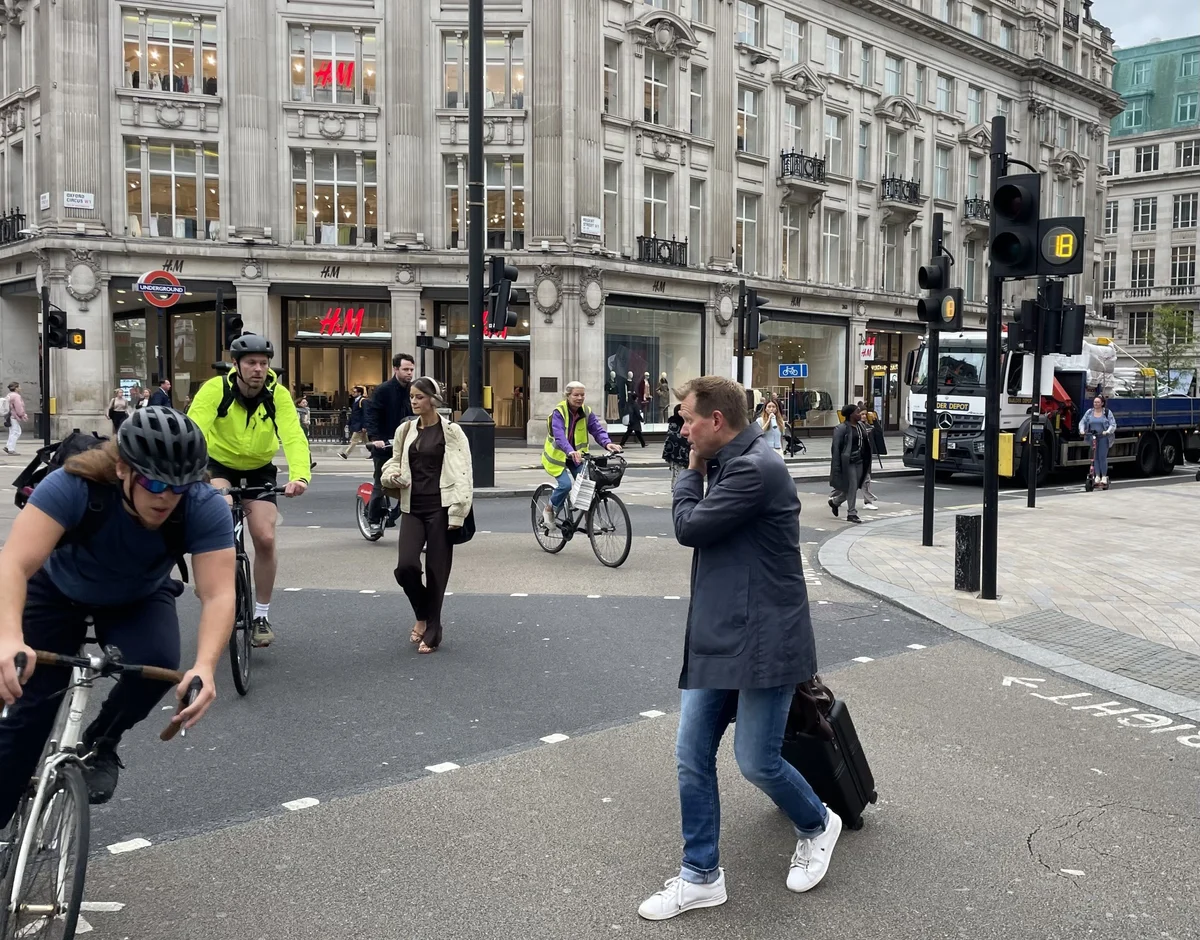By Ben Leach
Copyright standard

Cyclists in the City of London could be hit with higher penalties for repeated offences such as running red lights under plans to tackle poor behaviour.
The City of London Police is exploring whether it can use Community Protection Warnings and Notices (CPWs, CPNs) to go beyond the £50 Fixed Penalty Notices it is currently able to issue for traffic offences.
The proposal is one of several being looked at by the police and the City of London Corporation to address “increased concerns about dangerous, antisocial, and nuisance cycling behaviours”.
A common bug bear for Londoners is stepping out to cross a road when traffic lights are red only to be almost hit by an e-bike that’s failed to stop.
In a paper which went before the Corporation’s Streets and Walkways Sub-Committee meeting earlier this week it was noted that the City’s roads are now much safer for cyclists and pedestrians than ever before. This is largely due to significant investment by the Corporation and Transport for London (TfL) in schemes such as new cycle lane infrastructure and adding more parking bays for dockless bikes.
The number of vehicles seen between 7am and 7pm across 12 sites in the City has decreased substantially, from 198,000 in 1999 to 59,000 in 2024. The number of cyclists meanwhile has increased from 8,000 to 52,000.
Despite that, cycling accidents remain below pre-pandemic levels and the ‘casualties per cyclist’ have dropped by 45 per cent since 2016/17.
The paper however noted there are “several concerns about cycling behaviour in the City”.
It continued: “These can be summarised as: dangerous cycling including running red lights (often at busy junctions), the more specific dangerous use of (sometimes illegally-modified) e-bikes, and ‘other’ illegal / nuisance cycling (mainly riding on pavements and pedestrianised areas, including the Barbican estate walkways).”
Some action has been taken but further options are being considered. These include improving data and analysis, introducing greater penalties for repeat offenders, and more prominent messaging promoting good behaviour.
National legislation currently prevents Fixed Penalty Notices of more than £50 being issued for dangerous cycling. The CPWs and CPNs the City of London Police are looking at would allow for more serious sanctions, including potential prosecution.
The Corporation and the police are planning to continue “encouraging national action” and push for changes to the levels at which dangerous cyclists can be fined. There are barriers to taking further action, such as the sheer number of cyclists on the roads in the City and that some poor behaviour may be a by-product of successful safety measures.
“The reductions in City vehicle traffic, the City-wide 20mph speed limit, and closing of Bank Junction to private motor traffic all mean it is now significantly less risky (to personal safety) for City cyclists to run red lights and otherwise cycle dangerously,” the report notes.
Common Councillor Jacqueline Webster asked officers at the Sub-Committee meeting specifically about the impacts of Lime bikes, with poor parking regularly raised in correspondence from residents.
“Is there more that we could be doing around the culture of cycling in the Square Mile, and is there more that we could be doing not so much looking at companies and their responsibility but our own campaign as a Corporation around culture, around speed, around courteousness and all of those things that are really, really important to people who live and work here?”
Bruce McVean, Assistant Director, Policy and Projects at the Corporation, said the issue of poor parking appears to be moving towards a point where the issue is oversubscribed bays. Parking areas are highlighted in the various operators’ apps, with whom the Corporation has been working to improve their management.
Mr McVean added it is hoped TfL will have the powers to licence operators in the next few years which would also help in this respect.
“We’re continuing to work with the operators on that,” he said. “Things are getting better, but there’s more work to be done on it.”



